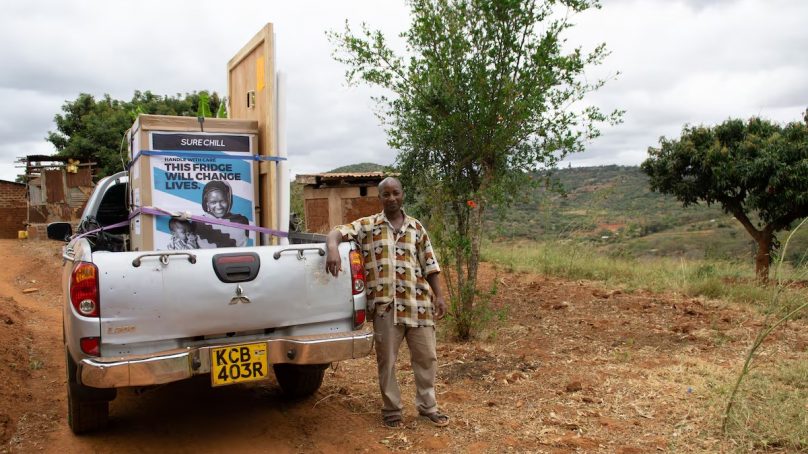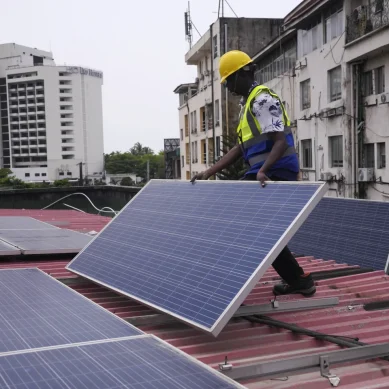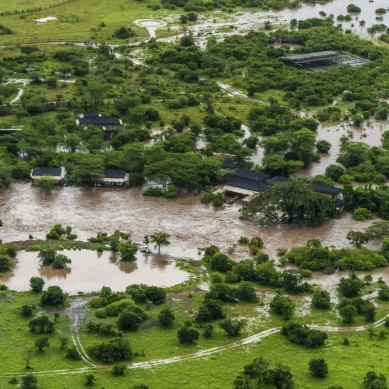
Over the course of this year, in cities, towns and villages across the tropical belt that cuts through sub-Saharan Africa, medics will begin administering doses of vaccines against malaria to millions of people. This promises to be one of the greatest public health efforts ever undertaken, helping to mitigate the vast toll that the mosquito-borne disease has claimed for millennia.
Malaria causes 608,000 deaths each year, 95 per cent of them in Africa. One of the two approved vaccines, labelled RTS,S, has been piloted, opens new tab on a large scale in Ghana, Kenya and Malawi, and Cameroon will be the first of 12 African countries that will begin administering doses this year.
An evaluation of the pilot found a total reduction in child mortality of 13 per cent in areas where RTS,S was administered, compared with similar areas where it was not available. The second vaccine, R21, was approved last December and is expected to prevent around 75 per cent of malaria episodes when given seasonally in high-risk areas.
The life-saving rollout of vaccines will be made possible by a humble piece of equipment: the fridge. Like most vaccines, the new malaria vaccines need to be kept constantly at between 2 and 8 degrees Celsius. Exposing the vaccines to higher or lower temperatures can render large batches useless.
The vaccine “cold chain” sees vaccines being stored and distributed through several layers, beginning with a national-level storage centre and cascading down to local facilities. In remote areas, where an electricity grid network is either absent or unreliable, the need for reliable refrigeration has long caused headaches, but huge progress has been made in recent years in developing fridges that use solar panels as a power source. Thousands of such devices are now in position across sub-Saharan Africa, ready to serve as the workhorse of the malaria vaccine rollout.
What we’re asking here is, do they have to be made out of virgin plastic?
Early designs for solar-powered fridges, sponsored by organisations such as the United Nations children’s rights body UNICEF more than 30 years ago, relied on batteries to provide back-up power during times when solar power was not being generated.
Claus Cording, innovation manager for cold chain equipment at Danish manufacturer Vestfrost, says that these designs were problematic, since batteries needed to be replaced fairly regularly. In the early 2000s, UNICEF asked companies to develop designs for solar-powered fridges that would not require batteries.
This resulted in the development of ice-lined, solar-powered fridges. When the sun is shining, the solar panels generate electricity that is used to make ice. Then, at night or when solar power is unavailable, the ice keeps the fridge cool without electricity.
While the World Health Organization requires fridges to be able to maintain optimum temperatures for 72 hours in conditions of 43C heat, Cording told The Ethical Corporation that Vestfrost’s fridges last for almost 115 hours, which is “more than enough in almost every area around the world”.
Immunisation campaigns have proven capable of deploying solar-powered equipment on a large scale, even in countries where many rural healthcare facilities suffer from a lack of electricity access. This reflects how immunisation programmes are planned with a large degree of centralisation, often involving funding and logistical support from major international actors. Although there are many links to the cold chain, the centralised planning is a key factor in getting resources to where they are needed.
Indeed, Wales-headquartered SureChill says 30,000 of its solar-powered fridges are in use across 75 countries. The company told The Ethical Corporation that its devices store vaccines that have safeguarded the lives of 10 million children.
Ian Tansley, who invented the ice-lined technology used in SureChill’s solar-powered fridges and serves as its chief technology officer, acknowledges that these devices are expensive. Costs range from $1,000-$6,000. But they are tasked with protecting a product that may be worth tens of thousands of dollars and has an incalculable value in saving lives. A more reliable fridge, he says, will “quite easily” justify the cost of avoiding a single breakdown.
Tansley adds that an important pillar of the business is the maintenance support provided by its on-the-ground teams of engineers. “There’s no point in building a lovely fridge and then just selling it into the market and expecting it to survive for its lifetime,” he says.
Alex de Jonquieres is the director of health system strengthening at Gavi, the public-private partnership body that is one of the major players in global vaccination campaigns. “There’s been quite a lot of innovation in the space over the last decade or so, which has really helped to solve some of the problems we had historically,” he says.
In particular, a wave of investment in the vaccine cold chain during the Covid-19 pandemic turbocharged the expansion in vaccine capacity around the world. The number of vaccine doses administered to children in countries that Gavi supports saw a threefold increase just between 2019 and 2021, reflecting an improved ability to administer vaccines in remote areas, among other factors.
While the malaria vaccination campaign will not be without challenges, De Jonquieres is optimistic. “Our expectation is actually that many countries should have the capacity at most points in their cold chain to manage the malaria vaccine,” he says.
The success of harnessing solar power in the vaccine cold chain naturally points to other uses of the technology. SureChill, for example, has developed a “pharma fridge” designed for rural clinics and pharmacies that need to store products such as insulin and antibiotics, as well as vaccines.
While vaccination campaigns benefit from centralised planning, deploying solar at scale across the wider health system is more complex given the sheer number of actors involved – many of which operate as private businesses.
De Jonquieres expresses frustration that solar power is not being used more widely to support health systems, but suggests there is an opportunity to build on the success of innovations in the vaccine cold chain.
As a first step, he says that Gavi is exploring ways to use solar panels to provide full electric power to facilities where vaccines are stored, rather than using the solar power only for fridges. The organisation is currently running a pilot programme to test this concept across around 1,000 facilities in four countries.
Indeed, having already helped to transform vaccine distribution, healthcare planners now face the task of harnessing solar to bring “a whole range of additional benefits” and help maximise the value of reliable electricity in healthcare settings.
- A Reuters report











